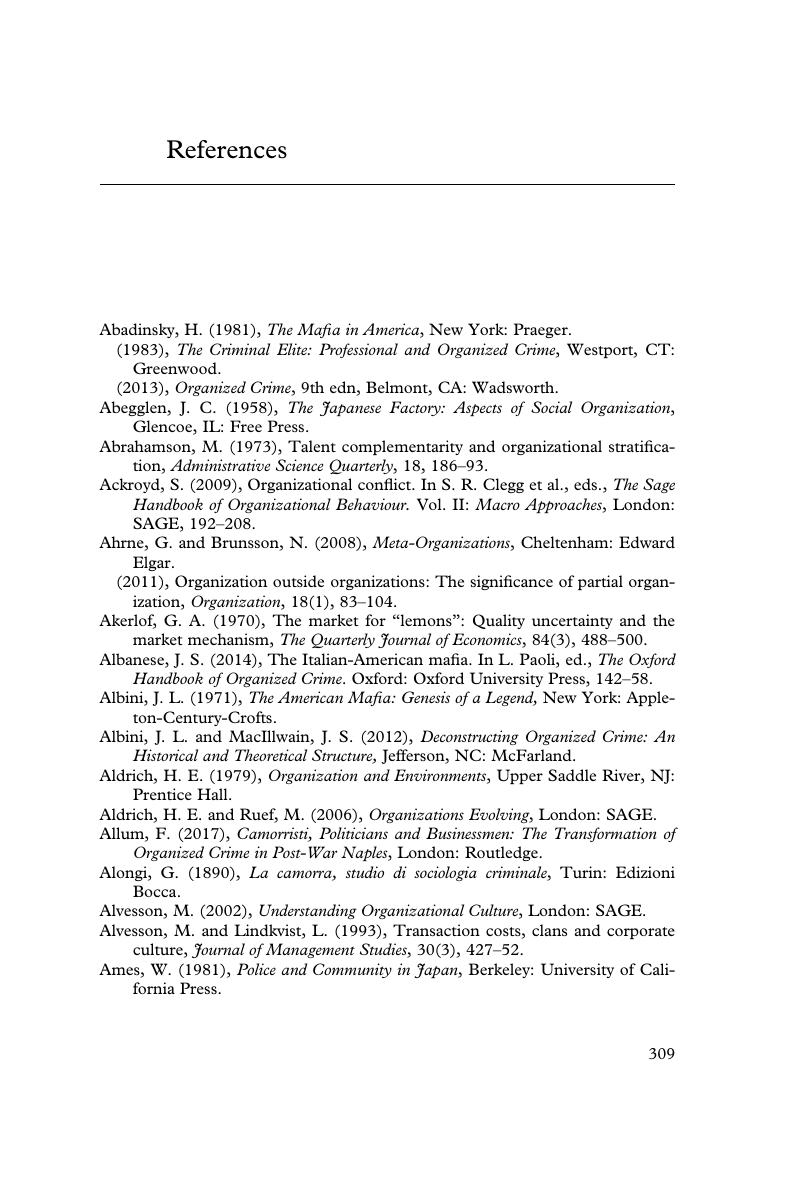Book contents
- Mafia Organizations
- Mafia Organizations
- Copyright page
- Dedication
- Contents
- Figures
- Tables
- Acknowledgments
- Introduction
- 1 What Type of Organization Are Mafias?
- 2 Organizational Architecture
- 3 Organizational Orders
- 4 Organizational Orders and the Use of Violence
- 5 Mafia Rules
- 6 Mafia Organizational Dilemmas
- References
- Index
- References
References
Published online by Cambridge University Press: 25 January 2019
- Mafia Organizations
- Mafia Organizations
- Copyright page
- Dedication
- Contents
- Figures
- Tables
- Acknowledgments
- Introduction
- 1 What Type of Organization Are Mafias?
- 2 Organizational Architecture
- 3 Organizational Orders
- 4 Organizational Orders and the Use of Violence
- 5 Mafia Rules
- 6 Mafia Organizational Dilemmas
- References
- Index
- References
Summary

- Type
- Chapter
- Information
- Mafia OrganizationsThe Visible Hand of Criminal Enterprise, pp. 309 - 335Publisher: Cambridge University PressPrint publication year: 2019



